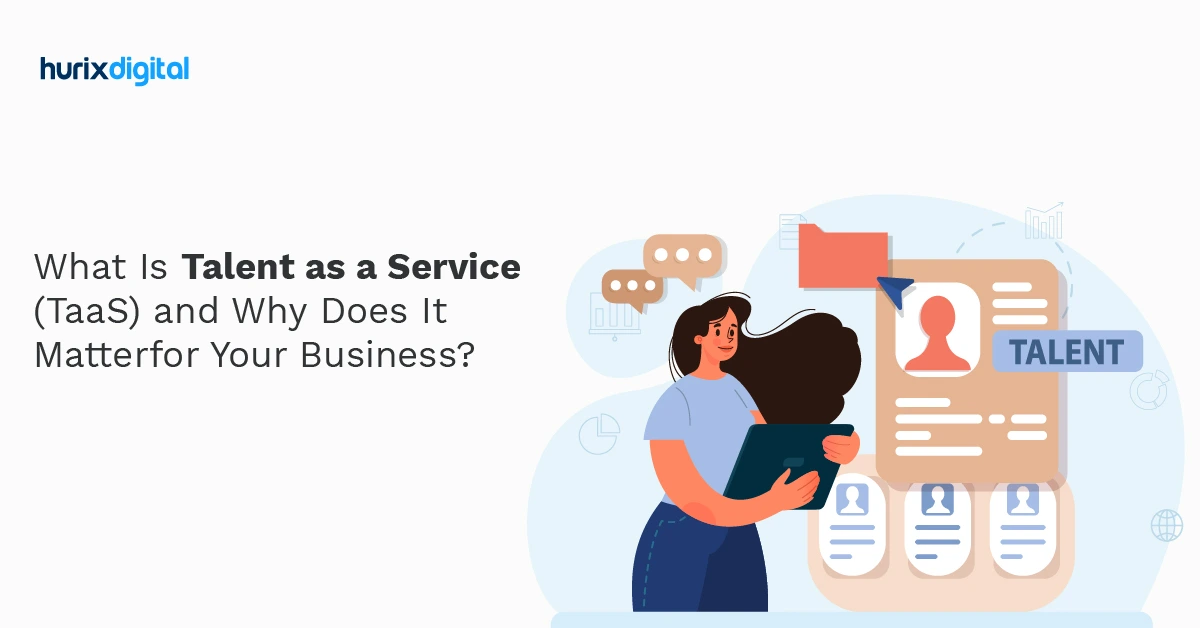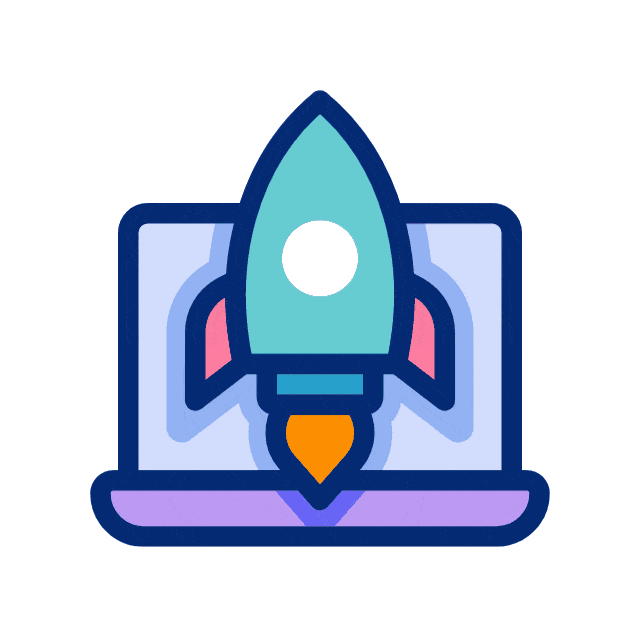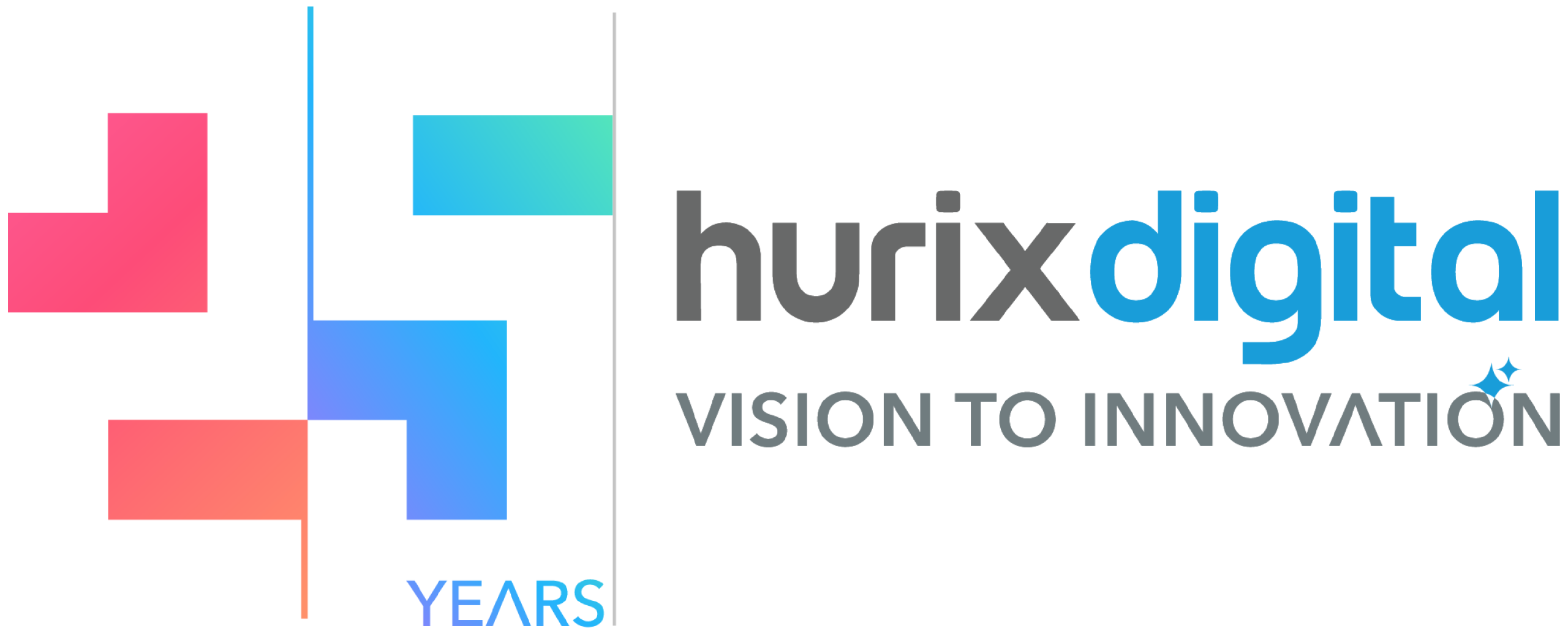
What Is Talent as a Service (TaaS) and Why Does It Matter for Your Business?
The game of the workforce has changed. Where once companies hired armies of permanent employees, now they have only a lean core and flexible talent clouds. The shift has been gradual, then sudden. One day, organizations were posting job listings in groups and doing endless interviews. Next, they were accessing the right kind of specialized skills on demand, scaling teams up and down like an easy thermostat change. This transformation goes by many names, but the one gaining traction is Talent as a Service, or TaaS.
The appeal is obvious. Why maintain a full bench of specialists when most projects need specific expertise for limited periods? Why struggle to find that rare combination of skills in one permanent hire when you can assemble dream teams for each initiative? The math looks compelling on paper. Access world-class talent without the overhead. Scale instantly. Pay for outcomes, not attendance. But beneath this seemingly straightforward value proposition lie complexities that keep executives awake at night. Because managing talent has never been simple, and adding “as a service” to anything creates its own unique maze of considerations.
Learning and development (L&D) leaders, particularly those overseeing digital transformation projects, face both exciting opportunities and significant challenges with TaaS. The questions they have to deal with are more complicated than just figuring out how much things will cost. They worry about quality control when talent comes and goes. When contributors aren’t employees, they worry about protecting their intellectual property. They are trying to figure out how to keep the culture alive when half of the workers are not in the usual places.
Table of Contents:
- What is Talent as a Service (TaaS) and Why is It Crucial?
- How Does TaaS Differ From Traditional Staffing Models Today?
- What are the Core Benefits of Implementing TaaS for Leaders?
- What are the Biggest Challenges When Adopting a TaaS Model?
- How Does TaaS Enhance Organizational Agility and Innovation Capacity?
- What is the True ROI of Investing in a TaaS Strategy?
- How Do You Seamlessly Integrate TaaS With Existing HR Systems?
- What Critical Governance and Compliance Issues Surround TaaS Adoption?
- How Does TaaS Influence Company Culture and Workforce Dynamics?
- What Strategic Future Outlook Does Talent as a Service Offer?
- A Final Word
What is Talent as a Service (TaaS) and Why is It Crucial?
TaaS changes the way businesses get access to people’s skills. Instead of owning talent, the company rents it, acquiring skills when needed and keeping them for as long as needed. It’s like the difference between getting a ride from Uber and buying a car. Both will get you where you need to go, but the costs, flexibility, and level of commitment are very different.
TaaS is based on the premise that expertise should flow wherever it creates maximum value. A pharmaceutical company developing e-learning modules doesn’t need a full-time instructional designer who understands FDA regulations. They need that specific expertise for six weeks. An AI startup building educational chatbots doesn’t require permanent linguistic specialists. They need them for the natural language processing phase. TaaS makes these focused engagements possible and practical.
Companies using TaaS effectively can pursue opportunities their traditionally-staffed competitors can’t touch. They can bid on projects requiring specialized skills without maintaining those skills permanently. They can experiment with emerging technologies without committing to permanent expertise. As businesses become more agile, TaaS has become a strategic necessity.
How Does TaaS Differ From Traditional Staffing Models Today?
Traditional staffing models and TaaS are in different galaxies, though they solve for the same equation. Whether it be permanent hiring or temporary staffing, traditional staffing belongs to the industrial age. Companies identify needs, search for individuals, bring them into the organizational structure, and manage them directly. Even with applicant tracking systems and internet job boards, the baseline equation is still very much intact: find people, hire them, manage them, eventually part ways.
TaaS flips this entire sequence. Instead of searching for individuals, organizations access pre-vetted talent pools. Instead of hiring, they engage. Instead of managing people, they manage outcomes. The difference seems subtle until you experience it. Traditional staffing fills positions. TaaS completes missions.
The financial models diverge sharply, too. Traditional employment carries hidden costs that dwarf actual salaries. The visible expenses can be doubled or tripled due to benefits, taxes, training, management overhead, and workspace. TaaS providers like Hurix Digital operate on entirely different economics. They spread talent costs across multiple clients, maintain lower overhead through remote-first models, and price based on deliverables rather than time.
Speed represents another universe of difference. Traditional hiring can take 20-45 days in tech sectors, longer for specialized roles. Add onboarding time, and organizations wait months before seeing productivity. TaaS engagements can start within days, sometimes hours. The talent arrives ready to contribute, already familiar with the kinds of challenges they’ll face. When projects pivot or requirements change, TaaS models adjust instantly.
What are the Core Benefits of Implementing TaaS for Leaders?
The immediate benefits of TaaS seduce executives quickly. Cost reduction grabs attention first. Tech organizations typically see 30-50% expense reduction compared to traditional employment when factoring in total compensation, overhead, and productivity ramp-up time. But fixating on cost misses the larger strategic advantages that make TaaS transformational rather than just transactional.
Access to elite talent changes the entire competitive equation. Most companies can’t afford to keep world-class experts in every domain on permanent payroll. Even if they could afford it, these experts wouldn’t accept traditional employment at a single company. They prefer variety, challenge, and independence. Organizations can hire former Fortune 500 executives, published researchers, and industry experts through TaaS.
Risk mitigation becomes remarkably straightforward. Every permanent hire represents a significant gamble. Cultural fit might fail, skills might not transfer, and performance might disappoint. Unwinding bad hires creates legal complexity, morale damage, and significant cost. TaaS engagements carry minimal risk. If talent doesn’t deliver, relationships end cleanly. If projects get canceled, financial exposure stays limited. Organizations can take bigger swings knowing misses won’t cripple them.
Innovation capacity expands dramatically when specialized knowledge becomes accessible on demand. Companies can explore blockchain applications without hiring cryptocurrency experts, prototype AI solutions without permanent data scientists, and develop AR training modules without full-time 3D artists. Each experiment requires minimal commitment but offers maximum learning. This ability to test and iterate rapidly accelerates innovation cycles from years to months. Leaders gain confidence to pursue ambitious initiatives, knowing they can access whatever expertise emerges as necessary.
What are the Biggest Challenges When Adopting a TaaS Model?
Despite compelling advantages, TaaS adoption hits predictable walls that naive enthusiasm rarely anticipates. Control feels different when talent isn’t “yours.” Managers accustomed to directing employees struggle with the relationship dynamics of engaging experts who might know more than they do. The power dynamic shifts from hierarchical to collaborative, and not everyone adjusts gracefully.
Knowledge retention becomes a genuine concern. When talent flows through organizations rather than residing within them, institutional memory can evaporate. That brilliant developer who optimized your learning platform knows every quirk and workaround. But they’re not your employee. When their engagement ends, that knowledge walks away unless you’ve built systems to capture it. Documentation helps, but never captures everything. External talent can effectively hold organizations’ systems hostage, not maliciously, but because they have become indispensable.
Quality consistency challenges even sophisticated operators. TaaS providers promise pre-vetted expertise, but vetting means different things to different providers. One company’s “expert” might be another’s “competent practitioner.” Without robust quality frameworks and clear performance metrics, organizations can find themselves cycling through talent trying to find acceptable matches. The time saved in hiring gets consumed in vendor management and quality control.
How Does TaaS Enhance Organizational Agility and Innovation Capacity?
Agility in business used to mean reacting quickly. Now it means shapeshifting entirely. By using TaaS, organizations effectively become polymorphic, transforming their capabilities as needed rather than relying on fixed structures. When market opportunities appear, they don’t check whether they have the right people. They acquire them instantly.
Consider how product development cycles compress when specialized talent becomes immediately accessible. A learning platform company spots an opportunity in virtual reality training. Traditional approach: spend months hiring VR developers, 3D artists, and experience designers. Hope they work well together. Pray the opportunity still exists when the team’s finally assembled. TaaS approach: engage a pre-formed VR team that’s delivered similar projects. Start building within weeks. Launch while competitors are still writing job descriptions.
Innovation thrives when experimentation becomes inexpensive. Organizations can test radical ideas without radical commitments. Want to explore whether AI-powered assessment could differentiate your platform? Engage AI specialists for a three-month proof of concept. If it works, scale up. If it doesn’t, move on. No severance packages. No awkward explanations. No sunk costs in permanent hires. This freedom to fail fast and cheap encourages bigger bets and bolder thinking.
What is the True ROI of Investing in a TaaS Strategy?
Calculating TaaS return on investment requires abandoning traditional HR metrics. Cost-per-hire becomes meaningless when you’re not hiring, and time-to-fill loses relevance when fulfillment happens in days. Instead, organizations need new mathematics that capture value rather than activity.
Start by identifying the projects you would not be able to pursue without TaaS. That government contract requiring specialized compliance expertise you had to pass on last year? With TaaS, you bid and win. Speed-to-market advantages compound geometrically. Launching products three months faster doesn’t just mean three extra months of revenue. It means capturing market share before competitors arrive. It means establishing brand position while others scramble. It means gathering user feedback that shapes version two while competitors release version one.
Hidden returns emerge in unexpected places. Employee satisfaction often improves when TaaS handles surge work that would otherwise overwhelm permanent staff. Instead of burning out during peak periods, core teams maintain a sustainable pace while TaaS talent handles overflow. Retention improves. Productivity sustains. Recruiting becomes easier as word spreads about reasonable working conditions. One organization calculated that reduced turnover alone justified its entire TaaS investment.
The strategic flexibility value defies easy quantification but drives enormous returns. In response to COVID, companies using TaaS shifted their focus from physical to virtual engagement capabilities immediately. Traditional employers faced horrible choices between maintaining suddenly unnecessary talent or conducting devastating layoffs. TaaS users simply shifted their talent mix. No drama. No trauma. Just rapid adaptation to a new reality. What’s that worth? Everything, if it determines survival.
How Do You Seamlessly Integrate TaaS With Existing HR Systems?
Integration nightmares kill more TaaS initiatives than cost concerns ever could. HR systems built for permanent employees revolt when faced with fluid talent that doesn’t fit standard categories. Onboarding processes demanding birth certificates and emergency contacts seem absurd for someone contributing twenty hours to a specific project. Performance review cycles assuming year-long relationships become meaningless for six-week engagements.
The smartest organizations don’t cram TaaS into existing HR frameworks. Instead, they create parallel processes optimized for different types of relationships. Traditional employees follow traditional paths. TaaS talent follows streamlined routes. Technology bridges help, but aren’t magic. Modern platforms can sync TaaS provider systems with internal HR databases, maintaining a single source of truth while respecting different operational realities. But technology alone doesn’t solve cultural integration challenges. Permanent employees might resent the perceived special treatment of TaaS talent. TaaS professionals might feel excluded from team dynamics. Neither situation improves productivity.
The organizations succeeding with integration focus on outcomes rather than processes. Instead of asking “How do we onboard TaaS talent?” they ask “What do TaaS professionals need to deliver value quickly?” Instead of standardizing performance reviews, they create project-based feedback loops that improve delivery. Instead of forcing everyone through identical security training, they tier access and education based on actual exposure. Legal and compliance teams initially resist this flexibility, but results convince skeptics. When projects deliver faster with fewer issues, process orthodoxy loses its appeal. The key insight: systems should serve strategy, not constrain it.
What Critical Governance and Compliance Issues Surround TaaS Adoption?
Governance and compliance sound boring until lawsuits arrive or regulations bite. TaaS introduces complexity that traditional employment models never contemplated. Who’s liable when TaaS talent makes mistakes? How do labor laws apply to non-workers? What happens when intellectual property ownership gets murky? These questions have answers, but they’re neither simple nor universal.
Classification challenges create immediate headaches. Misclassifying TaaS talent as independent contractors when they’re effectively employees triggers penalties, back taxes, and legal nightmares. But treating them as employees defeats the entire TaaS value proposition. Different jurisdictions interpret these distinctions differently. What’s acceptable in Texas might be illegal in California. What works in the US might fail in Europe. Organizations operating globally face exponentially multiplying complexity.
Intellectual property ownership requires careful consideration. Standard employment agreements vest all work product with employers. TaaS relationships aren’t employment. Without explicit agreements, TaaS talent might retain rights to their contributions. Worse, they might inadvertently transfer your methods to other clients. Clear contracts help, but don’t eliminate risk. Some organizations segment projects to minimize IP exposure. Others accept calculated risks for superior talent access.
How Does TaaS Influence Company Culture and Workforce Dynamics?
Culture conversations usually devolve into vague aspirations about values and mission statements. But TaaS forces concrete examination of what culture actually means when half your talent isn’t actually “yours.”When workers are geographically dispersed, temporary, and technically external, traditional culture-building tools are no longer relevant.
Permanent employees experience identity shifts when TaaS talent arrives. Are these collaborators or competitors? Partners or threats? The uncertainty breeds anxiety that manifests in various ways. Some permanent employees become territorial, hoarding information to preserve their perceived value. Others disengage, figuring their contributions matter less when “outsiders” handle important work. Neither response helps productivity or morale.
Yet organizations managing this transition thoughtfully often discover unexpected cultural benefits. TaaS talent brings fresh perspectives that challenge institutional blindness. They question assumptions that permanent employees have stopped noticing. They introduce practices that evolved elsewhere.
The successful culture integration happens when organizations stop viewing permanent and TaaS talent as separate categories requiring different treatment. Instead, they focus on contribution and collaboration regardless of employment status. Project teams blend permanent and TaaS members based on skills, not classifications. Recognition systems celebrate outcomes, not tenure. Knowledge sharing becomes an expectation, not an exception. This requires deliberate effort and consistent messaging. Leaders must model inclusive behavior, ensuring TaaS talent gets invited to relevant meetings, included in communications, and acknowledged for contributions. When done right, the cultural evolution strengthens rather than threatens organizational identity.
What Strategic Future Outlook Does Talent as a Service Offer?
The trajectory of TaaS points toward fundamental reimagination of work itself. We’re moving from organizations as fixed entities with clear boundaries to dynamic networks that assemble and disassemble based on opportunity. The implications extend far beyond HR departments and staffing budgets.
Competitive advantage shifts from resource accumulation to resource orchestration. Companies that own the most talent won’t necessarily win. Companies that can rapidly access and effectively deploy the right talent will dominate. This changes everything from strategic planning to organizational design. Why maintain massive headquarters when talent exists everywhere? Why limit growth to hiring capacity when talent scales infinitely? Why accept geographic constraints when expertise ignores borders?
Educational institutions and corporate training departments face existential questions. If specialized expertise becomes instantly accessible, what’s the value of developing it internally? If TaaS provides world-class capabilities on demand, why invest in employee development? The answer isn’t abandoning development but reimagining it. Core competencies still matter. Cultural knowledge remains crucial. But the definition of “core” narrows while access to “peripheral” expertise expands infinitely.
Industry boundaries blur when talent flows freely between sectors. The instructional designer working on pharmaceutical training today might optimize retail onboarding tomorrow. Cross-sector knowledge transfer accelerates. Best practices spread faster. Innovation patterns that emerged in one industry appear in others almost immediately. Companies can no longer assume competitive moats based on proprietary knowledge when that knowledge walks out the door every evening, virtually speaking.
A Final Word
The questions surrounding Talent as a Service won’t resolve themselves through wishful thinking or aggressive avoidance. Organizations must engage with these complexities thoughtfully, recognizing that perfect answers don’t exist. Every approach involves trade-offs, every benefit carries risks, and every opportunity demands careful consideration.
At Hurix, we help you navigate these challenges with flexible, expert Talent as a Service (TaaS) solutions tailored to your needs. Ready to transform your workforce? Contact us today for a consultation.

Vice President & SBU Head –
Delivery at Hurix Technology, based in Mumbai. With extensive experience leading delivery and technology teams, he excels at scaling operations, optimizing workflows, and ensuring top-tier service quality. Ravi drives cross-functional collaboration to deliver robust digital learning solutions and client satisfaction
 Upcoming Masterclass | Build an Army of Brand Evangelists using Training & Development | November 20th, 8:30 AM PDT | 11:30 AM EDT | 10:00 PM IST
Upcoming Masterclass | Build an Army of Brand Evangelists using Training & Development | November 20th, 8:30 AM PDT | 11:30 AM EDT | 10:00 PM IST
